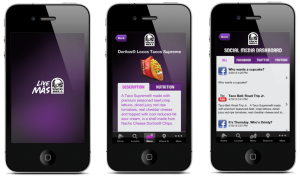
Social video marketing (social media + video + marketing) is now bigger than ever as shown by the recent updates by Facebook, Twitter, and Instagram.
The three social media giants are right back at it by hustling in a bunch of new updates to imply that each of them comply with the wishes of content marketers.
I’ll specify the updates later. Read on.
Video marketing, without question, is the cornerstone of any quality brand nowadays. In fact, 40% of consumers state that video increases the chance that they’ll buy a product.
It’s probably one of reasons why social media platforms are fighting tooth-and-nail to improve their apps with features like video recorders, video editors and video players, view counts, and (though I personally find them annoying) auto-play videos.
But those features have been available for quite some time on the Facebook, Twitter, and Instagram mobile apps. That’s a matter for another article. In this article, I will talk about their updates related to video content.
Facebook Now Prioritize Video Content
Facebook’s news feed has been a personal news source for half of its users, or for the other half, a collection of stories from pages they like and people they know.
The difference is that Facebook’s news feed used to be like an online newspaper, but now it’s more like online TV news.
In fact, by November 2015 Facebook had reached a mind-boggling count of 8 billion daily video views. For businesses, this means Facebook is a platform for brand building that should be considered seriously.
But back in December 2015, Facebook introduced live video which enables users to broadcast their videos and get feedback and comments in real-time.
Although the update was successful early on, with broadcasted video being treated just like other videos, the news feed algorithm often failed to show them in real-time. Instead, they would show up after the live stream was over.
Although the update was successful early on, with broadcasted video being treated just like other videos, the news feed algorithm often failed to show them in real-time. Instead, they would show up after the live stream was over.
As quoted from Facebook’s newsroom:
Now that more and more people are watching Live videos, we are considering Live Videos as a new content type – different from normal videos – and learning how to rank them for people in News Feed. As a first step, we are making a small update to News Feed so that Facebook Live videos are more likely to appear higher in News Feed when those videos are actually live, compared to after they are no longer live.
In short, live video will now be treated as a superior type of content compared to non-live videos.
You must have a page to be able to live stream using Facebook’s Livestream app, though. I tried looking it up with my personal Facebook account, I was prompted with this:

Facebook’s live streaming is now one of the 5 ways to blend your video content with the future of marketing.
However, it’s probably still far from equal in terms of stream quality and features with other platforms like Periscope, Twitch, Snapchat, and Meerkat which are specifically built for video-streaming purposes.
And FYI, Snapchat’s video traffic had just caught up with Facebook’s 8 billion daily views by the time I write this article.
Twitter’s In-App Video Recording
In-app video recording on Twitter has been around for about one year, but so far it’s still the most significant update on the mobile app for content marketers.
Twitter’s previous significant statistics with video content included the fact that 82% of their users love to discover and watch new videos, 90% of whom do so on mobile devices.

That’s why adding an in-app record feature encourages content creators to upload their video to Twitter, because it’s much simpler than embedding from their Vine accounts or having to upload from their phones’ storage (for iOs).
Compared to YouTube, which users mostly use to find specific videos, Twitter users watch videos they can find on the platform without looking up specific terms or hashtags.
This gives better exposure for brands in niche industries with very small market windows, and Twitter (directly or indirectly) provides those brands with just what they need.
Instagram’s Video Duration Update
Among all the recent major app updates, Instagram’s update is the featured one on every content marketing and online marketing blog.
At the end of March 2016, Instagram announced that they would extend the allowed video duration for regular users from 15 seconds to 60 seconds.
The is due to the increasing number of users watching videos on Instagram. Quoting from Instagram’s blog, this is what brought the update to Instagram’s development plan.
In the last six months, the time people spent watching video increased by more than 40 percent. And longer videos mean more diverse stories from the accounts you love, whether it’s Selena Gomez (@selenagomez) hanging out with friends or beauty star Bretman Rock’s (@bretmanrock) latest makeup tutorial.
What this means for startups
Instagram has allowed marketing videos up to 60 seconds long before, exclusively for paid advertising.
But now, regular users can post a video up to 60 seconds long for free. That means startups and small business now have access to a whole new level of video content to be published.
Because of the “foreign” concepts they often propose, one of the core content strategies for a startup business is an explainer video.
It was a difficult (if not impossible) task to explain a product and catch an audience’s attention with 15-second explainer videos. That’s only 25% of the standard explainer video duration.
Simply said, what previously had to be done in 15 seconds now can be done in 60 seconds, for free.
Takeaways
- Facebook now puts video content, especially live-streamed, above other types of content
- Twitter’s mobile application supports in-app video recording, making it much easier to create content without leaving the app.
- Instagram extended its video duration limit for regular users to 60 seconds, making available a whole new level of social video marketing for startups and small business.
With all three major updates covered, you might think that you should just click that share button under your video. However I would not recommend that.
Sharing marketing videos with the wrong crowd could result in adverse effects for your brand. But it’s really easy to overcome once you have the how-to and who-to for sharing your marketing videos. For more information on that, check out my previous article, 4 DIY social media video sharing tricks.
What plans do you have for taking advantage of these changes in social video marketing? Let me know in the comments.
Digital & Social Articles on Business 2 Community(20)








